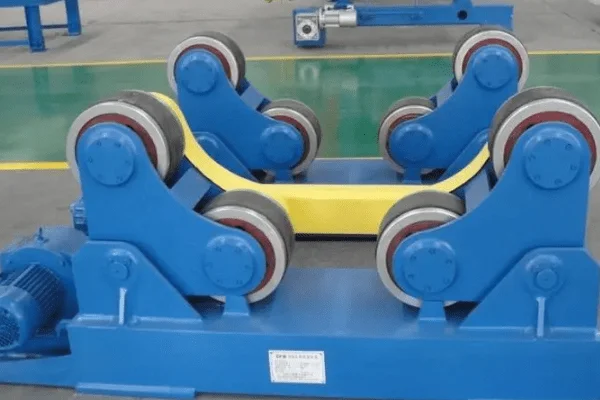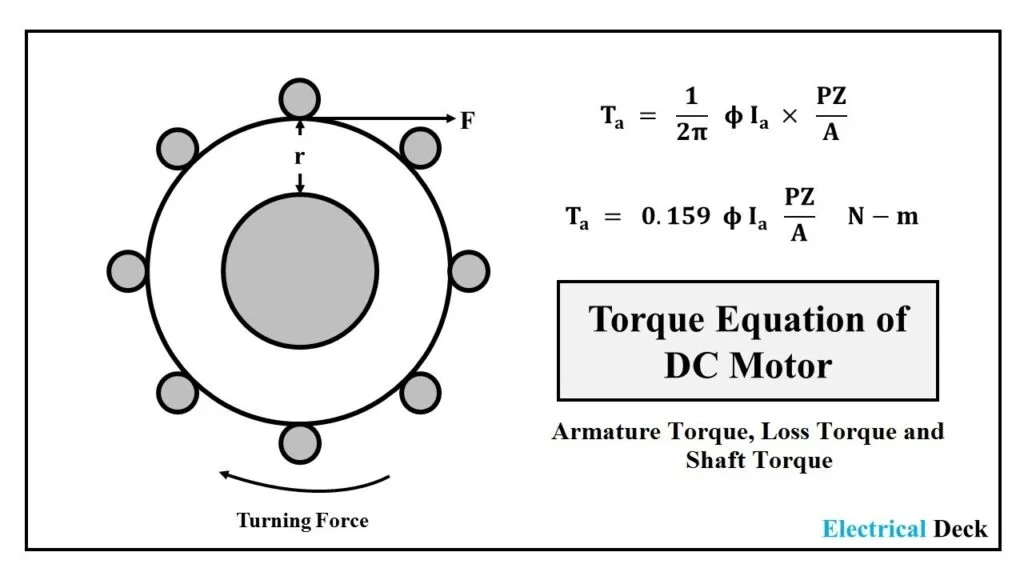Page Contents
ToggleHow to calculate torque of motor
Understanding the torque of a motor is crucial. It’s a key factor for engineers, technicians, hobbyists, and students.
Why is it so important? Torque determines the motor’s ability to perform work. It’s the rotational force that a motor can produce.
But how do you calculate it? This article will guide you through the process.
We’ll provide a step-by-step guide on how to calculate torque of a motor. We’ll explain the importance of torque and discuss the factors that affect it.
Whether you’re a professional or a DIY enthusiast, this guide will be useful. It’s designed to help you understand motor specifications and performance.
So, let’s dive in and learn how to calculate motor torque.
Understanding Motor Torque
Motor torque is a measure of a motor’s rotational strength. This determines how much force the motor can apply to turn an object.
In technical terms, torque is the rotational force applied around an axis. It is essential for understanding motor performance in different applications.
Torque is what enables motors to perform tasks like turning wheels, moving conveyor belts, or powering machines. It’s directly related to how effective a motor will be in any given task.
Grasping torque concepts helps in selecting the right motor for your needs. It ensures compatibility and efficiency in your applications.
The Importance of Torque in Motor Applications
Torque is pivotal in determining a motor’s capability to perform work. It directly impacts the motor’s effectiveness and reliability in applications.
High torque is essential for applications requiring powerful starts or heavy lifting. Without adequate torque, a motor might struggle or fail under load.
Motor designs often balance torque with speed and efficiency. Understanding this balance is crucial for achieving optimal performance.
Units of Torque Measurement
Torque is commonly measured in Newton-meters (Nm) or foot-pounds (ft-lb). These units quantify the force applied over a rotational distance.
In some contexts, other units might be used, but these are the most standard. This enables engineers and technicians to communicate effectively.
Here are the most common torque units:
- Newton-meters (Nm)
- Foot-pounds (ft-lb)
Consistently using standard units helps prevent errors in design and analysis.
The Torque Calculation Formula
Calculating the torque of a motor involves a fundamental formula. At its core, torque equals force multiplied by distance.
However, in motor applications, we often use power and speed instead of raw force. For electric motors, the formula connects torque, power, and speed.
Expressed mathematically: Torque (Nm) = Power (W) / (Speed (RPM) x 2π / 60). This formula intertwines torque, power, and speed, offering insight into motor performance.
Correctly using this formula is vital for designing efficient systems. Misjudging torque values can lead to underperformance or even damage.
Ensure your calculations incorporate all variables accurately. Double-checking values and units can prevent costly errors in motor selection and use.
Calculating Torque from Power and Speed
To calculate torque from power and speed, start by knowing your motor’s power rating and speed. Power is often provided in watts or horsepower. Speed is usually measured in revolutions per minute (RPM).
The relationship between these components forms the basis of torque calculation. By rearranging the power formula, you derive the torque.
Here’s how it looks: Torque (Nm) = Power (W) / (Speed (RPM) x 2π / 60). This equation explains how these factors interrelate.
Knowing this calculation helps engineers align motor capabilities with application needs. It also aids in identifying potential issues with inadequate torque.
Horsepower to Torque Conversion
Converting horsepower to torque involves understanding both terms. Horsepower measures a motor’s power capacity while torque measures rotational force.
The conversion process starts with the knowledge that one horsepower equals 746 watts. Use this to find torque if power is given in horsepower.
Apply the formula: Torque (Nm) = (Horsepower x 746) / (RPM x 2π / 60). This provides torque in Newton-meters.
Such conversions are crucial in contexts where specifications differ. They allow for a consistent understanding regardless of measurement systems.
Consistency ensures that motor performance aligns with design expectations, avoiding potential inefficiencies or failures.
Factors Affecting Motor Torque
Several factors influence motor torque. Motor design, efficiency, and speed characteristics play crucial roles in torque outcomes.
External factors also matter. Friction, load inertia, and mechanical losses affect how much torque the motor can deliver.
Understanding these factors helps in selecting the right motor for any application. It ensures the motor meets the required performance standards.
Accuracy in estimating these influences prevents operational problems. Overlooking one aspect can lead to unexpected failures.
Engineers should consider all relevant factors when evaluating motor torque. This leads to optimal motor performance and longevity.
Motor Types and Their Torque Characteristics
Different motor types display unique torque characteristics. DC motors, for instance, reach peak torque at stall conditions.
AC motors, however, have a torque curve influenced by speed, with a distinct peak called breakdown torque. Stepper motors, known for precision, offer holding torque even when idle.
Servo motors offer controlled torque output, valuable in automated systems. Each motor type fits specific applications, based on its torque profile.
Knowing these characteristics is essential for effective motor use. It aids in predicting behavior under various operating conditions.
The Role of Motor Efficiency and Gear Ratios
Efficiency impacts torque generation in motors. More efficient motors convert more electrical power into mechanical torque.
Losses in inefficiencies lead to decreased usable torque. Calculating motor torque must factor in its efficiency to avoid overestimations.
Gear ratios also influence torque. Gears can increase or decrease torque based on application needs.
Adjusting gear ratios allows for torque customization without altering the motor. This flexibility is crucial in applications requiring specific torque levels.
Considering efficiency and gears optimizes motor selection and operation, aligning torque output with application requirements.
Practical Examples of Torque Calculations
Let’s explore practical examples of motor torque calculations. Understanding these examples helps apply theoretical knowledge effectively.
Real-world scenarios bring clarity to torque calculation concepts. Each motor type requires a distinct approach based on its design.
These examples focus on DC and AC motors, two popular types. They illustrate how to calculate torque given specific parameters.
Each scenario showcases the formulas in action. They demonstrate how power, speed, and other factors interact to produce torque.
By examining these cases, you can grasp how theoretical principles translate into practical applications.
Example for DC Motor Torque Calculation
Consider a DC motor with a stall torque specification. Suppose the motor has a power rating of 150 watts and runs at 2000 RPM.
Calculate torque using the formula: Torque (Nm) = Power (W) / (Speed (RPM) x 2π / 60). This equation provides precise results.
The example demonstrates applying the formula to real data. It is essential for determining motor performance in operations.
Example for AC Motor Torque Calculation
An AC motor operates at 1800 RPM with a power input of 200 watts. We need to find its torque.
Use the formula: Torque (Nm) = Power (W) / (Speed (RPM) x 2π / 60). Plug in the AC motor’s known values.
Solve to determine torque. This example aids in understanding torque relationships in AC systems, enhancing practical application skills.

Common Mistakes and Tips for Accurate Torque Calculation
When calculating motor torque, common mistakes can skew results. Misreading motor specifications is a prevalent error.
Incorrect unit conversions often lead to inaccuracies. Always check whether you need to convert between watts and horsepower.
Overlooking the impact of motor efficiency is another frequent mistake. Efficiency plays a critical role in actual torque output.
To ensure precision, double-check all calculations. Understanding and using correct formulas helps avoid these common pitfalls.
Conclusion and Further Resources
Calculating torque is crucial for motor performance and reliability. Mastering this skill empowers engineers and enthusiasts alike.
Accurate torque evaluation ensures that motors meet application demands effectively. Precision is key in achieving optimal results.
For those eager to delve deeper, numerous textbooks and online resources offer advanced insights. Explore them to expand your knowledge.
Greensky Power Co., Ltd. is a professional manufacturer engaged in the research, development, production, OEM motor, sale of stepper motor.
If you are searching stepper motor for your project, please contact our sales team.
Top 20 brushless motor manufacturers in the World in 2024
How to calculate torque of motor?
The calculation formula for rotational torque is:
T=9550 * P/n
Among them, T is the rotational torque, in Newton meters; P is the rated output power of the motor, in kilowatts; N is the rated speed of the motor, in revolutions per minute. This formula is obtained by converting the units of power and speed, and can calculate the rotational torque based on the output power and speed of the motor.
In addition, the rotational torque can also be measured through experimental methods. In the experiment, the motor is connected to a dynamometer, and the motor is rotated at different speeds by adjusting its load. The output power and torque of the motor are measured. Through these measurement data, the torque speed curve of the motor can be plotted, thereby obtaining the mechanical characteristics of the motor.
It should be noted that the rotational torque is related to factors such as the type, structure, and material of the motor, so different motors have different torque speed curves. In practical applications, it is necessary to determine the appropriate rotational torque based on the characteristics and load conditions of the motor to ensure that the motor can operate normally and achieve the expected performance indicators.
In addition to calculation formulas, there are also some factors worth considering that affect the rotational torque. The following are some main factors:
Speed and power of the motor: The torque output by the motor is related to the speed and power of the motor.
P=T* ω (Power=torque * angular velocity)
T=9550P/n This formula is commonly used in engineering: torque; Power; The calculation formula for the relationship between rotational speed and other factors.
In the formula: T – torque (unit: N.M) 9550- treat it as a constant (do not investigate its source) P – motor power (unit: KW)
N – Output speed (in revolutions per minute)
The origin of constant 9550: The work completed by T is the work output by the motor.
Taking squirrel cage asynchronous motors as an example (excluding variable frequency motors):
When the frequency is below 50Hz, the motor torque changes proportionally to the current;
When the frequency reaches 50Hz, the motor reaches the rated power and rated torque;
When the frequency is greater than 50Hz, the torque and current vary inversely.
Load conditions: The load conditions of a motor have a significant impact on its rotational torque. For example, when the load driven by the motor is a frictional load or an inertial load, its rotational torque will be greatly affected. Therefore, when selecting a motor, it is necessary to choose the appropriate motor type and specifications based on the load conditions.
Motor pole number: The number of poles in a motor is related to its speed and rotational torque. The more poles there are, the lower the speed of the motor, but the rotational torque will correspondingly increase. Therefore, when selecting a motor, it is necessary to choose the appropriate number of poles according to the working needs.
Transmission mode: The transmission mode of the motor also affects its rotational torque. For example, when using transmission methods such as belt or chain transmission, the rotational torque will be affected by the loss and resistance of the transmission mechanism, thereby reducing transmission efficiency. Therefore, when choosing a motor, it is necessary to consider using appropriate transmission methods to improve transmission efficiency.
Motor installation method: The installation method of the motor also affects its rotational torque. For example, compared to horizontally installed motors, the rotational torque of a vertically installed motor may differ due to the influence of gravity. Therefore, when selecting a motor, it is necessary to consider adopting a suitable installation method to improve the performance of the motor.





